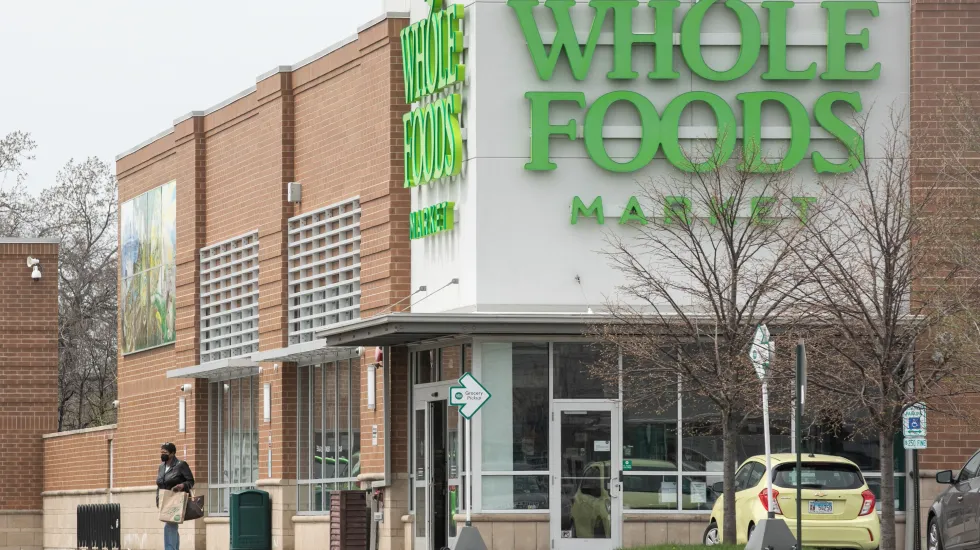
The corner of 63rd and Halsted streets in the Englewood neighborhood was once among the mightiest shopping districts in the Chicago area.
It was a half-scale version of the Loop, with major department stores, jewelers, movie theaters, clothiers and grocery stores.
But nearly all that commerce withered away and ultimately vanished between 1970 and 1990 as chains such as Sears and Wieboldt’s hit hard times, and the suburban mall and multiplex began poaching shoppers and movie-goers.
If 63rd and Halsted can rebuild from this, starting with the opening of Englewood Square Shopping Center six years ago, it can certainly come back from Whole Foods announcing plans last week to shut down its store in the 5-acre mall.
Editorials
Which isn’t to say we should shrug off the closing as no big deal, particularly since the store was widely seen — and pitched by Mayor Rahm Emanuel’s administration — as an oasis in the South Side food and fresh produce desert when it opened in 2016.
But it’s not the end of the world. Whole Foods vacating the space gives the city and Englewood Square’s developer Leon Walker a shot at getting in a grocer that’s a better match for the neighborhood in terms of selection and pricing.
Store once ‘showed real promise’
Whole Foods said the Englewood location and one in the DePaul University Welcome Center in Lincoln Park are among six underperforming U.S. stores it planned to close in the upcoming months.
The day before the closing was announced, Amazon, which owns Whole Foods, said it had its first quarterly loss since 2015. But the company did not say if the loss led to the planned shut-downs.
“As we continue to position Whole Foods Market for long-term success, we regularly evaluate the performance and growth potential of each of our stores, and we have made the difficult decision to close six stores,” Whole Foods said in an issued statement.
That’s a pretty mealy-mouthed response that borders on insult, given Englewood residents worked with the company three years prior to the location’s opening, figuring out the store’s design, artwork, a jobs program — even the types of prepared food the store would sell.
“It showed real promise, and I think it continues to show real promise of how retailers could meet community needs and work with the community to help design something that was unique and important,” Cecile DeMello, executive director of Teamwork Englewood, said last week.
But for Whole Foods to walk away from all those community expectations — not to mention the time residents spent helping — without a sit-down with Englewood customers and a full explanation is wrong.
“When I think about other communities on the North Side in Streeterville and River North, they have multiple grocery stores,” Ald. Stephanie Coleman (16th) said. “From Englewood to Edgewater, we should have the same opportunities, the same resources, the same retail opportunities as any other no matter what our ZIP code is.” The other neighborhood grocery option is an Aldi’s near 63rd and Wallace.
Lashay Shambley, 21, a bank employee who gets lunch from the Englewood Whole Foods: “There’s nothing but Popeyes, McDonald’s and Wendy’s. I kind of looked toward Whole Foods for like a healthy escape,” she said.
‘The community needs a grocery store’
Englewood Square’s other establishments, including Starbucks, Chipotle and DTLR fashion outlet, are still in business.
But for all it was, the Englewood Whole Foods could have been a better fit.
Residents said when the store opened, it offered cheaper prices than in other Whole Foods locations. But prices eventually rose.
“Whole Foods was just expensive,” Ald. Jeanette Taylor (20th) said. “And a lot of people did not shop there.”
Woodlawn community activist Naomi Davis was critical of the Whole Foods location from the start, telling Marketplace in 2016, “I wonder why a local fresh market purveyor wasn’t targeted for that spot? I concern myself with that we are not thinking about community wealth building.”
Then there’s this: City Council’s agreement that sold the parcel at 63rd and Halsted for redevelopment at a price of $1.00 required a grocery store be located on the site until 2027.
So the hunt should be on for a new, affordable grocer who wants to move in once Whole Foods is out.
And the city must now help lead the search or keep a sharp eye on it, given the Emanuel administration poured $26 million in tax increment financing funds and federal tax credits approved by the city in order to get Englewood Square built.
“We’ve got to do something, though,” Taylor said. “We cannot waste that TIF money. And the community needs a grocery store.”
She’s right.
Send letters to letters@suntimes.com







